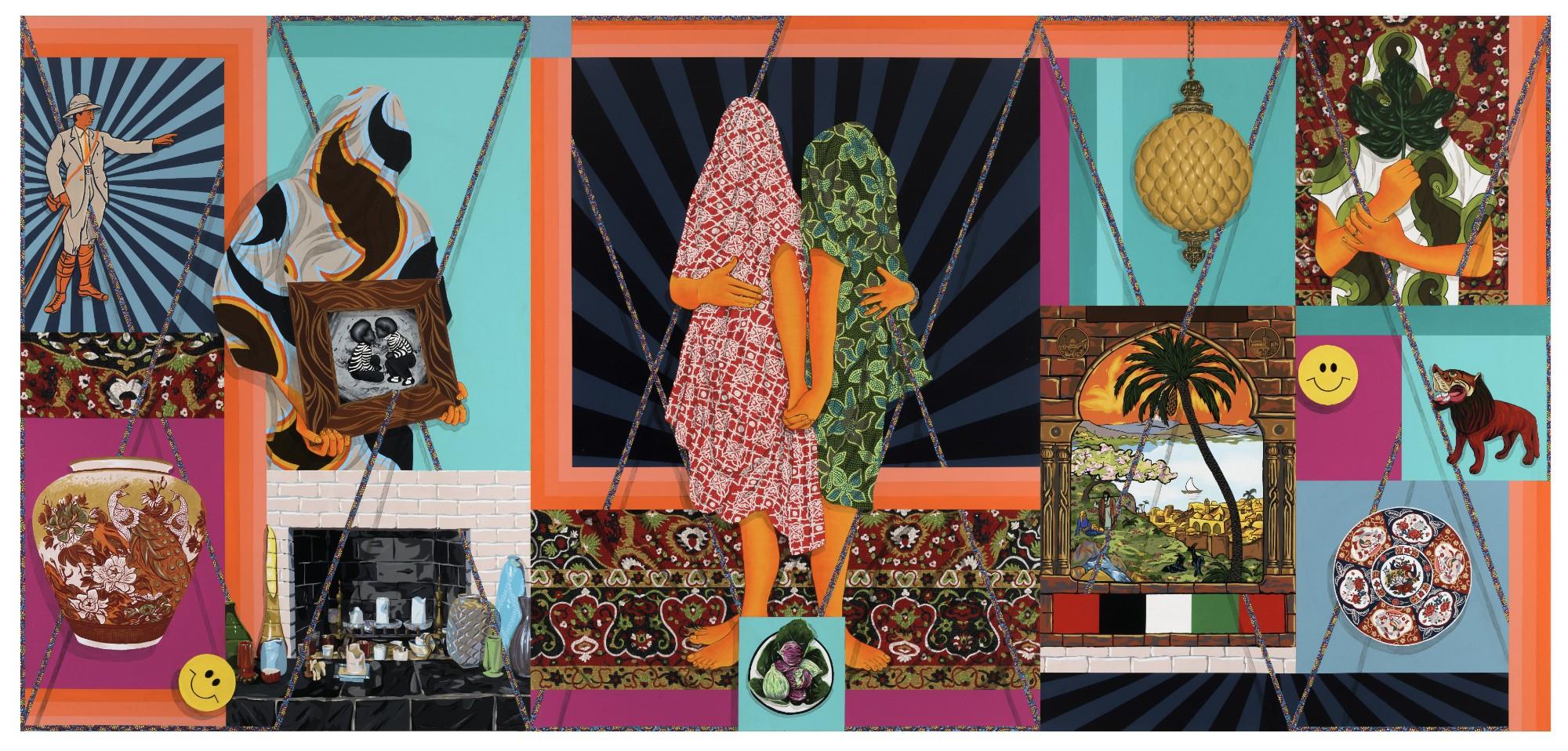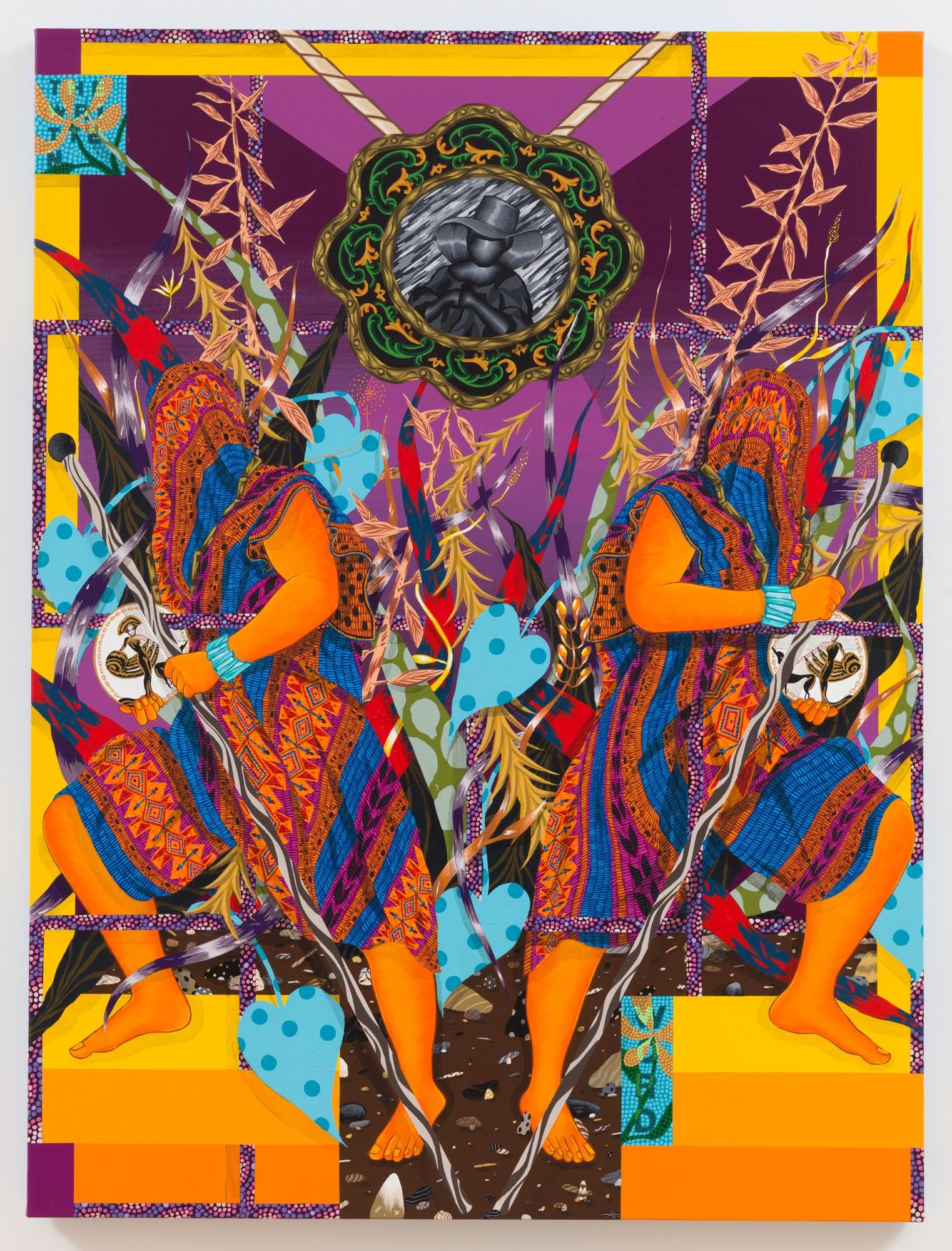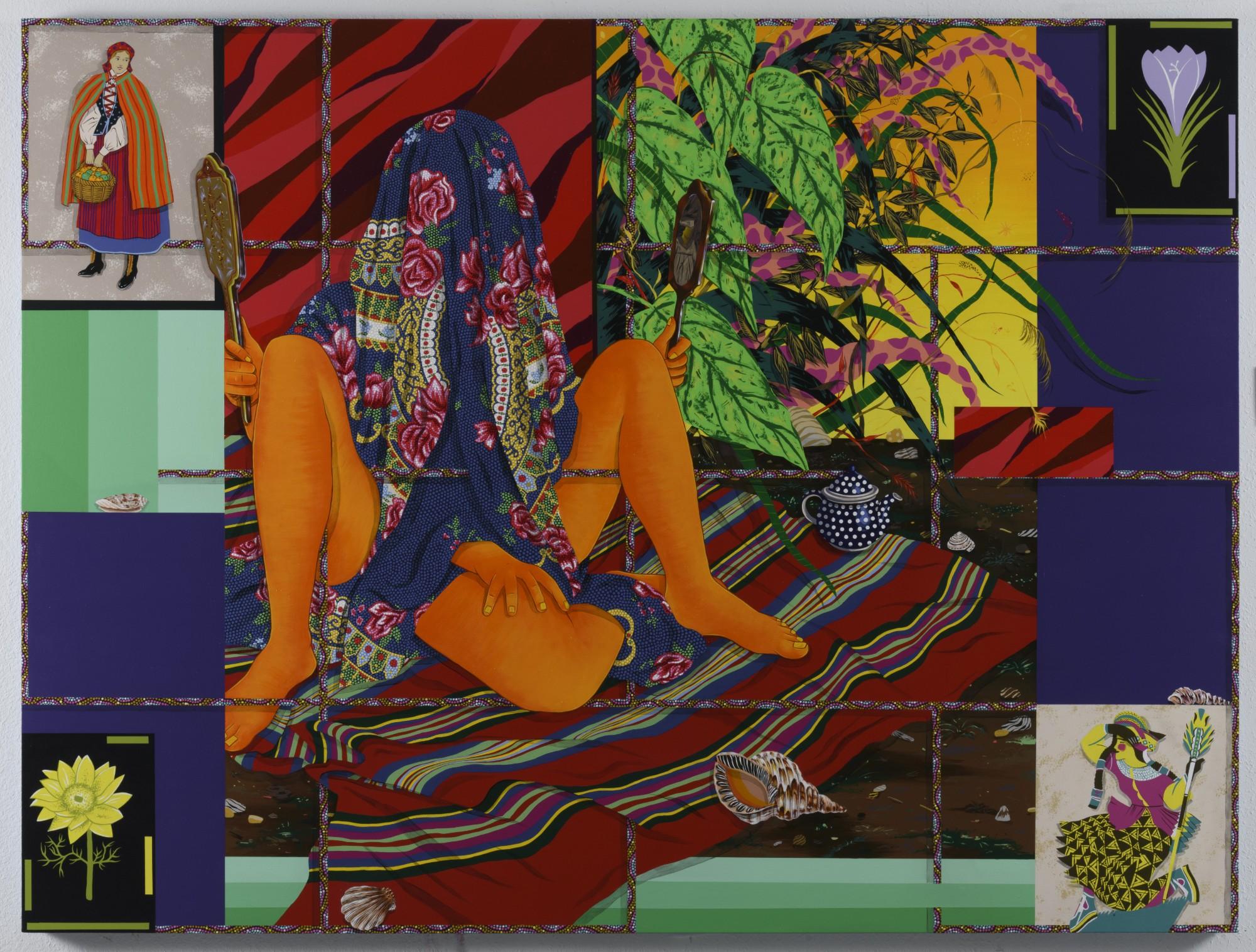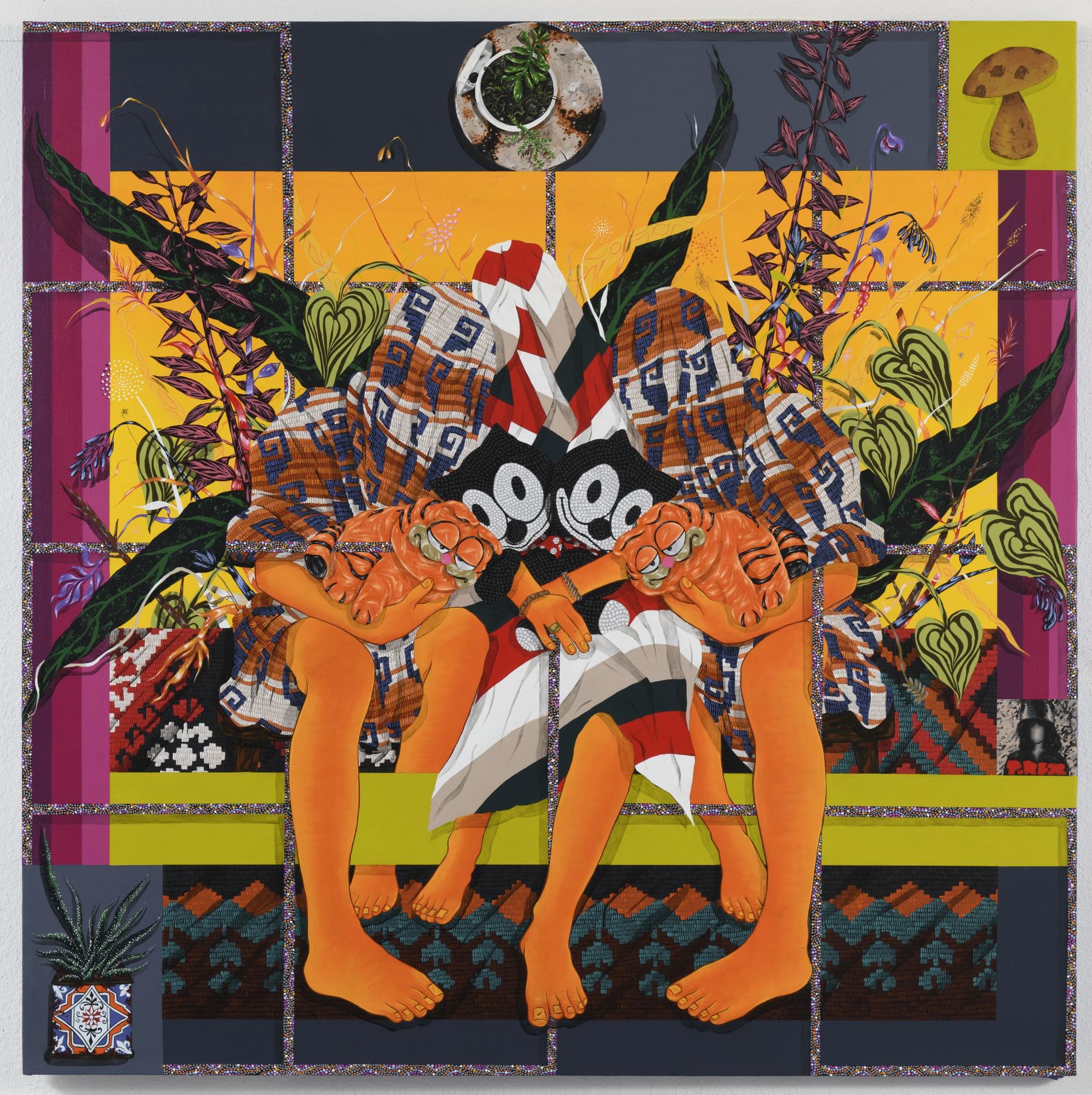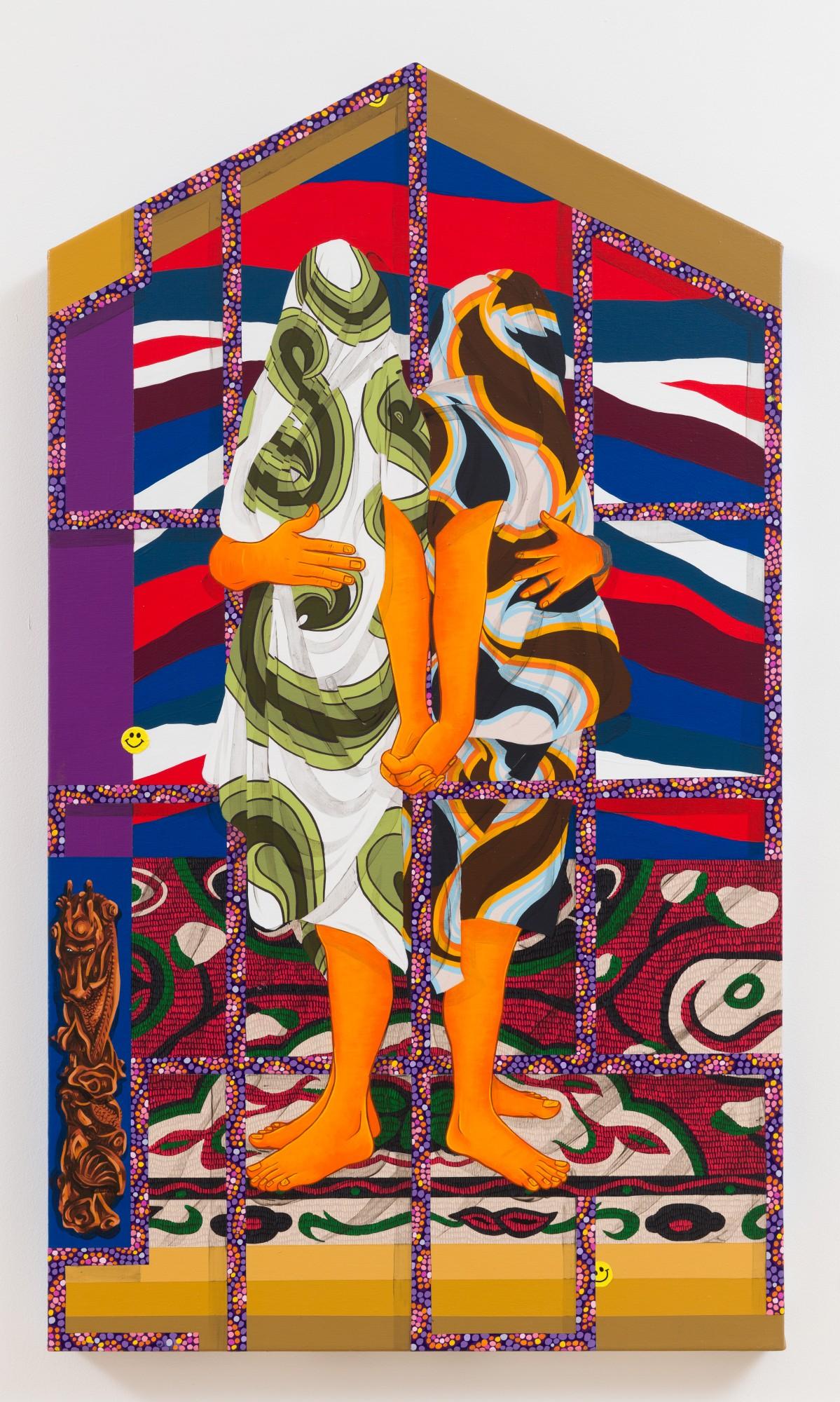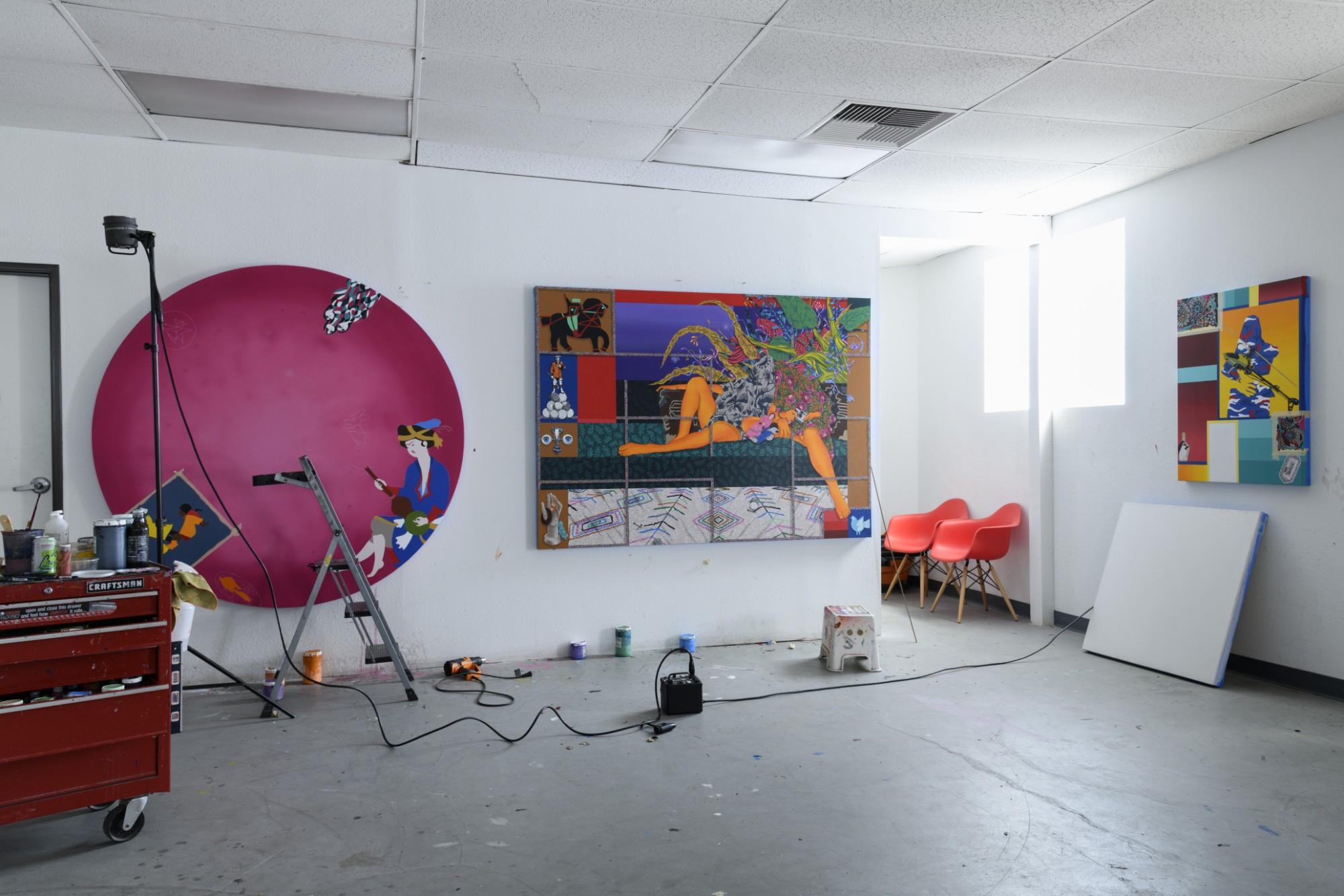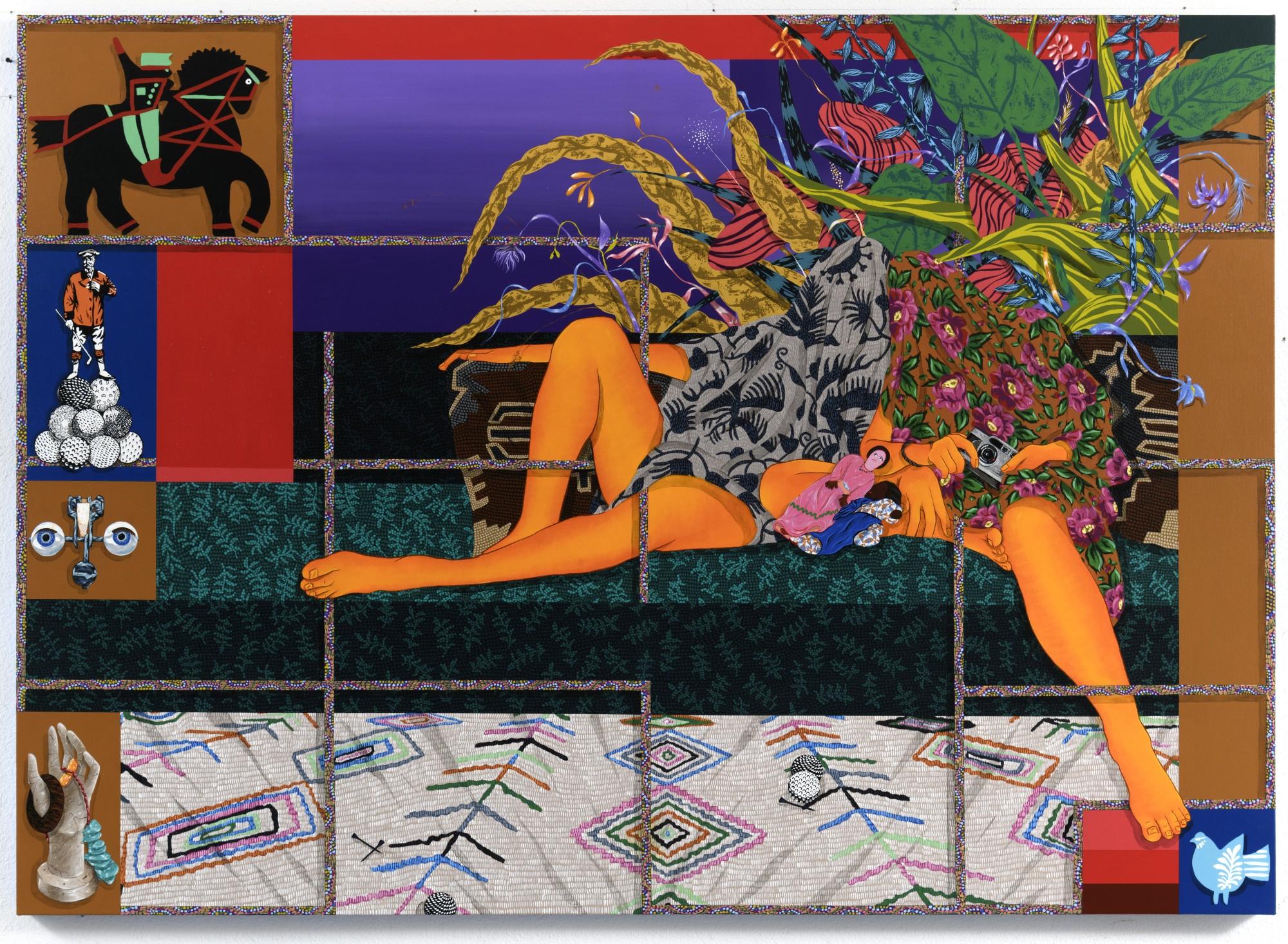A recent exhibition at the Museum of Contemporary Art, Tucson is the an expansive exhibition of his work from 2020. The show, entitled Scatter My Ashes on Foreign Lands, showcased “one of America’s most prolific and compelling contemporary artists.” It featured work exploring multifaceted topics personal to the artist like family, identity, the immigrant experience, and art history.
Born in Iran but having grown up in the US, Fallah has said in several interviews that while he’s always seen himself as just as American as anyone else, others do not always agree. Whether because of his name or his appearance, people have asked him more than once where he’s really from.




